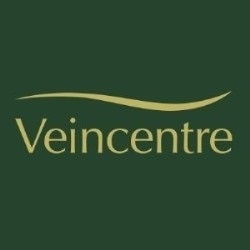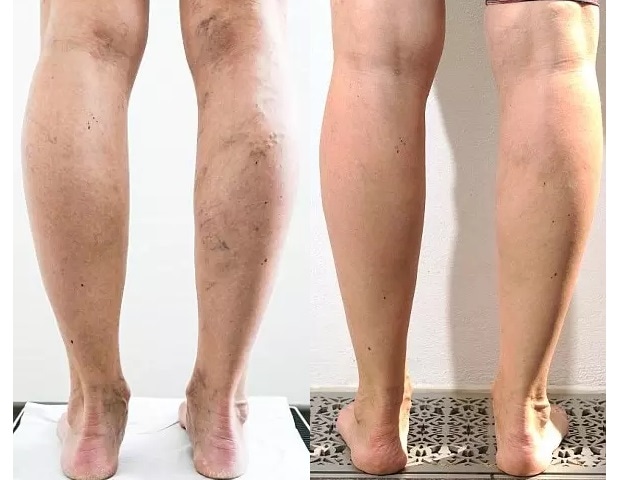In 2015, TV presenter Julia Bradbury visited the Veincentre clinic in London to undergo treatment for her thread and varicose veins. Patients are often eager to learn about the specifics of the treatment and learn more about the intricacies of the procedure. Ms. Bradbury graciously discusses her treatment process and results.
Veincentre began by treating Julia’s underlying cause varicose vein problems with EVLA. Once the underlying cause of the varicose veins was treated, the team began treating the external varicose veins in her legs with a combination of microsclerotherapy and foam (this treats both the veins and thread veins).
All Veincentre treatments follow NICE (National Institute for Health and Care Excellence) guidelines.
Julia explained the reason for the search treatment of varicose veins.
She said: “I’ve had varicose veins since I was in my 20s, but four months into my pregnancy with my twin girls Xanthi and Zena, who are now 15 months, varicose veins started to appear behind my knee and below. my calves and feet looked like stilton. It was awful. I was afraid I would never be able to wear a dress or skirt again. I always consciously avoided short skirts and shorts and became a mistress of disguise, wearing leggings and the right shirt, even on holiday. Having gone through five grueling IVF rounds, I wanted to avoid anything that was highly invasive or involved general anesthesia, so the laser treatment offered by Dr. West was attractive.”
Consultation: Stage 1
On initial examination, Julia presented with large varicose veins in the right leg and smaller varicose veins in the left, particularly in the lower leg. In both legs, Julia had multiple thread veins.
In order to pinpoint the underlying sources behind Julia’s vein problems, a duplex color ultrasound and clinical examination was performed on both of Julia’s legs. It is impossible to evaluate the veins to determine what treatment is needed without this complete and detailed scan.
In Julia’s case, this ultrasound scan revealed that the underlying condition of the varicose veins in both legs was total regurgitation (defective valves) in the Great Saphenous Vein (GSV) – the large vein that runs from the groin to the ankle. In both of her legs, the Small Saphenous Vein was normal.
Destruction of the sources of varicose veins: Stage 2
In this case, intravenous laser ablation (EVLA) needed to correct the underlying cause of Julia’s varicose veins.
This procedure has a series of steps, starting with numbing the target area with a local anesthetic before a fine laser fiber is inserted into the vein using a needle puncture. This fine laser fiber then heats the vein wall and destroys it. In this procedure, general anesthesia is not required.
Julia said of the procedure: “It wasn’t painful, more like a tickling sensation. The worst part was the burning smell as the laser does its work. The initial session took about an hour and you get used to it.”
For a week after the treatment, Julia wore a pair of class II compression stockings, which helped reduce swelling and pain after the procedure.
Monitoring: Stage 3
Julia’s first appointment was 6 weeks after EVLA. Julia had no problems after her treatment. As is often normal at this stage, Julia’s veins had not yet started to show signs of shrinking – which is increasingly common as the majority of her veins were thread veins. Typically, the vast majority of veins require immediate treatment – although some veins may disappear.
It was confirmed that the EVLA treatment had successfully destroyed the veins that were causing Julia’s problems, namely (the two GSVs) with the repeated double ultrasound scan.
Julia had her first session of foam sclerotherapy injections and micro sclerotherapy injections into the visible veins at this stage of the treatments. The foam sclerotherapy procedure involves a chemical that is mixed into a foam and then injected into the veins.
Once mixed with the blood in the veins, the foam should harden the blood. Once this happens, the patient’s body gradually breaks down the blood and reabsorbs it into the bloodstream. Microsclerotherapy is used for smaller thread veins, while foam sclerotherapy is used for larger veins.
Julia wore her compression stockings for another week after this treatment, as per best practice.
Six weeks later, Julia shared: “I can’t boast that I have flawless legs but the improvement is amazing. I feel more confident about going barefoot which is great now summer is here. I don’t have to think about how to cover my legs better and wear dresses and skirts that are a little shorter without feeling self-conscious.My legs feel smooth to the touch and I feel confident that this is a permanent solution to the problem that has plagued me for most of adulthood of my life”.
Further sessions of sclerotherapy injections: Stage 4
Although they responded well to the first session of injections, Julia’s varicose veins and thread veins were relatively extensive, so they needed a further treatment session for better results. These sessions can be considered “tidy up” sessions to watch for any visible thread veins that remain.
As a result of the chemicals required in sclerotherapy, there is a legal limit to how many of the chemicals can be safely injected in one session. Although patients are often willing to continue the duration of the session until they are satisfied with the final result, patient safety is of the utmost importance.
If all the veins have not managed to be injected before reaching the safety limit, it is possible that the patients will have to come back again. It is also important to note that some veins can also be particularly difficult and require two injection sessions to get the desired result.
Like Julia, about 10% of patients may need additional injection sessions after follow-up. The counselor is encouraged to accurately inform the patient of how many sessions they are likely to need based on their initial session.
However, it is important to keep in mind that everyone responds differently to treatment, so it is very difficult to give a clear answer.
Julia’s most recent visit to the Veincentre included her video with Dr West performing a session of her microsclerotherapy injections. Check out Julia’s short Instagram video of Dr.’s treatment here. West.
Image credit: Veincentre
About Veincentre


At Veincentre, we provide the most effective, proven treatment and the highest quality care accessible to all. We treat the cause, not just the symptoms! All of our treatments are minimally invasive – extubation, withdrawal, no general anesthesia required, no surgery and no time off work.
The most important aspect of care for any condition is the skill and attitude of the team of doctors and nurses who care for you. We’ve hunted down some of the most experienced and respected vein specialists in the UK. By choosing Veincentre you can be sure that discomfort will be minimized, results will be optimized and you will be looked after by a team that really cares about you
From your initial point of contact you will be in contact with our patient advisors, who only deal with patients suffering from varicose veins, so they are all very experienced and can confidently answer all your queries or provide any advice.
Start your journey to healthy veins and happy feet…
Sponsored Content Policy: News-Medical.net publishes articles and related content that may come from sources where we have existing commercial relationships, provided that such content adds value to News-Medical.Net’s core editorial ethos of educating and informing website visitors interested in medical research, science, medical devices and treatments.


